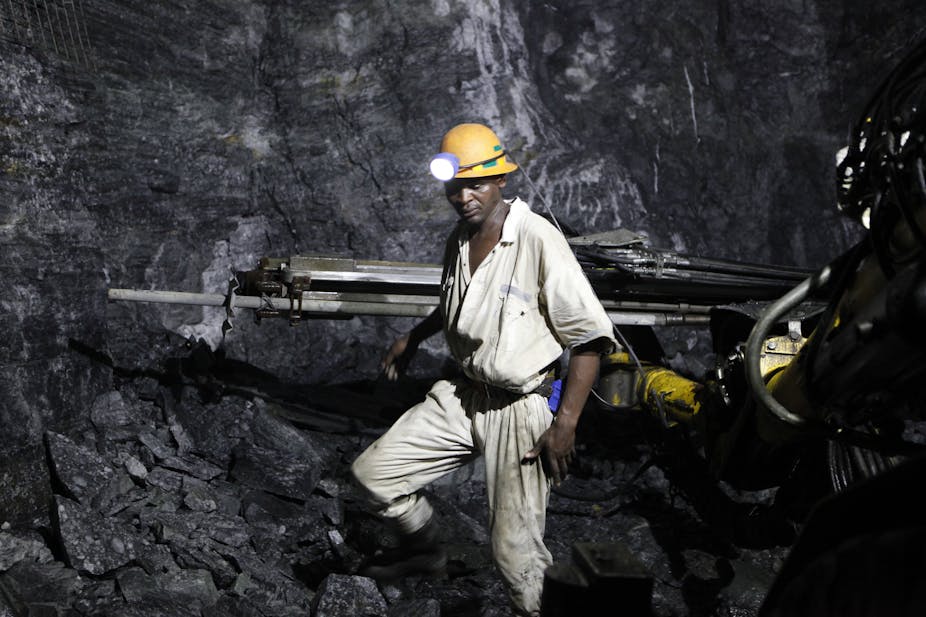Two of the world’s mining heavyweights have announced production cuts and staff cutbacks. These moves by BHP Billiton and Anglo American will have a major impact on efforts to contain TB and HIV as mining houses have become integral to the provision of health care in southern Africa. The disease burden is high among the region’s 490 000 miners in the gold, platinum and coal industries. They carry one of the highest TB/HIV co-infection rates globally, ranging from 50% to 77%. The Conversation Africa health and medicine editor Candice Bailey asked Dr Liesl Page-Shipp to unpack the problem.
How big is the burden of HIV/TB in the mining sector?
Mine workers have different health risks, depending on whether they work in gold, platinum, coal or other commodities. Their living conditions may also be a risk factor. Gold mining poses the highest risk for silicosis. This in turn gives them a higher chance of being infected with TB.
Globally TB affects 128 in every 100 000 people. In sub-Saharan Africa this figure is more than double at 350 people for every 100 000. In South Africa, the prevalence is 948 cases for every 100 000 people.
In some mines this rate is reported to be up to between 2500 and 3000 cases for every 100 000 people. This is 10 times the emergency threshold set by the World Health Organisation.
How important are mining houses in providing health care?
Some mining houses provide a high standard of health care for their employees through on-site 24-hour primary health clinics, which are linked to secondary or tertiary hospitals.
These clinics provide a full package of health care services including anti-retroviral treatment, TB treatment and monitoring and treatment for chronic diseases like hypertension and high blood pressure. The service is available to all employees including migrant labourers from neighbouring countries such as Lesotho, Swaziland and Mozambique. About 30% of mine workers in South Africa are migrant labourers.
But in some instances mine workers are totally dependent on local Department of Health facilities. Mine workers who require services access these facilities in their own time using often limited resources.
How vulnerable are people to mine closures? Will they lose treatment?
Many will be vulnerable to treatment being interrupted or discontinued. Robust referral systems within South Africa and across borders are missing. Issues of stigma and disclosure to families may pose additional barriers to continued treatment for TB and HIV once miners return home. In addition, mine workers may come from areas with poor access to comprehensive medical care. This would restrict their options for HIV and TB screening, diagnosis and treatment.
Governments and mining houses in the region have recognised some of the challenges around poor access to care. There has been a commitment from governments to adopt a coordinated response to managing TB in the mining sector. In 2012, heads of state signed the SADC Declaration on TB in the Mining Sector. This was followed by a framework to manage TB and a Code of Conduct on TB in the mining sector. More recently the Global Fund against TB and malaria has awarded a grant for TB in the mining sector in Southern Africa Programme.
A multi-sectoral response is required to adequately respond to the challenges. This will need to include mining companies, health departments, labour departments and civil society.

